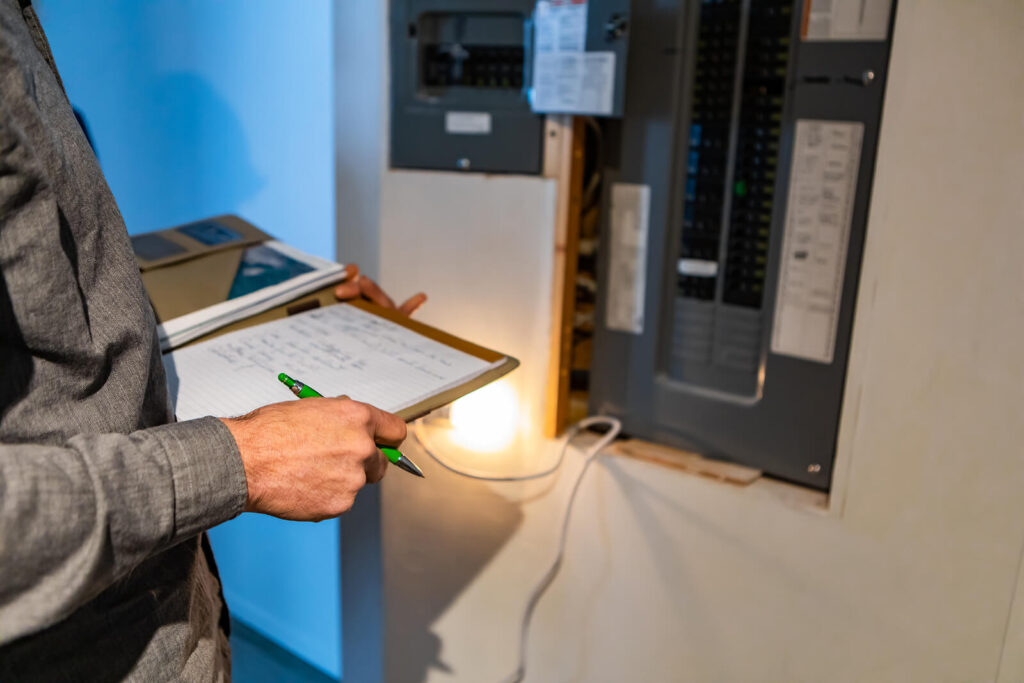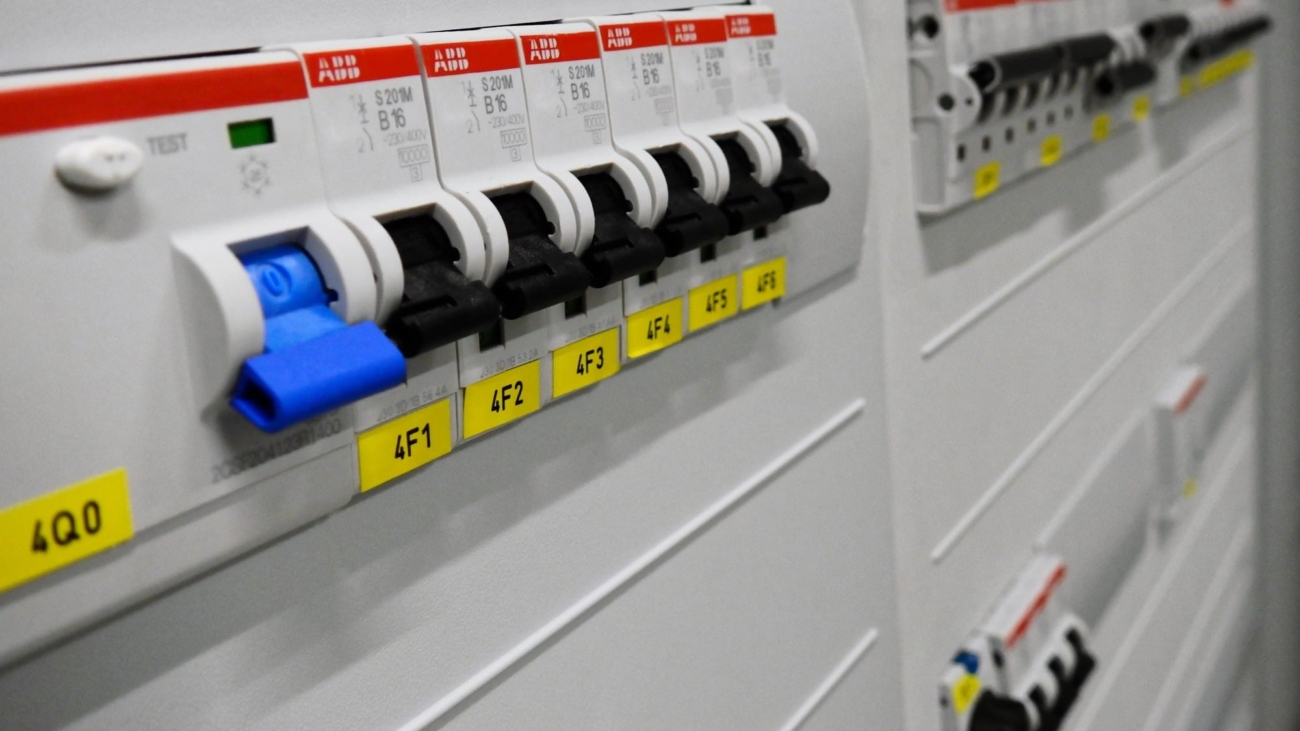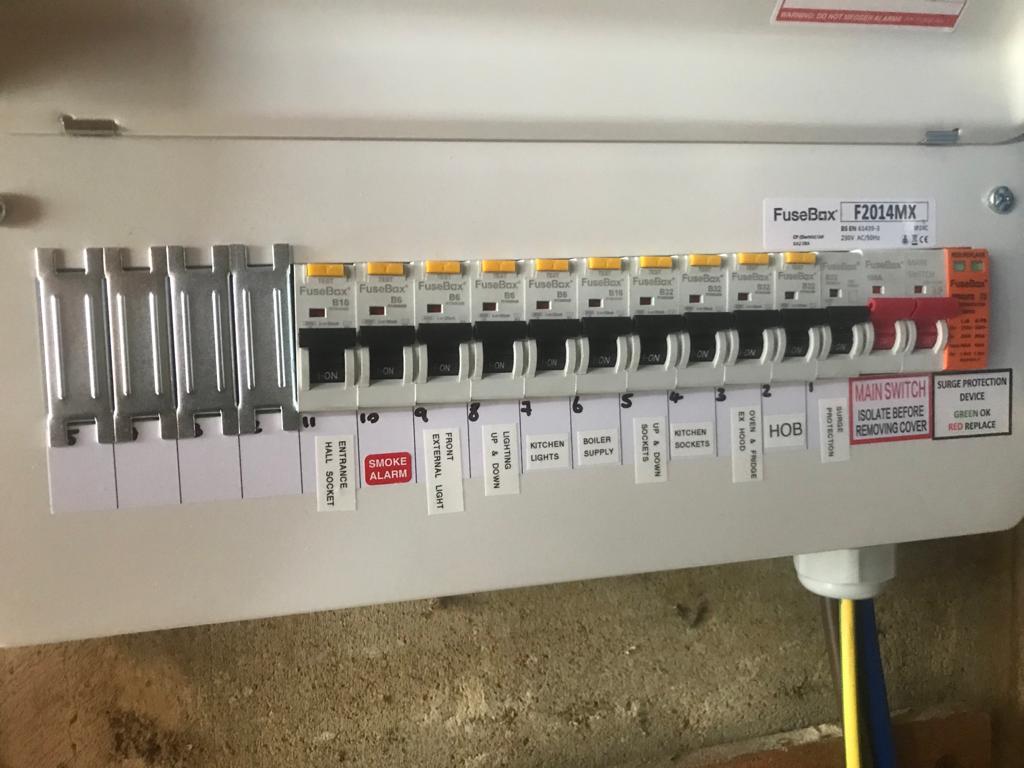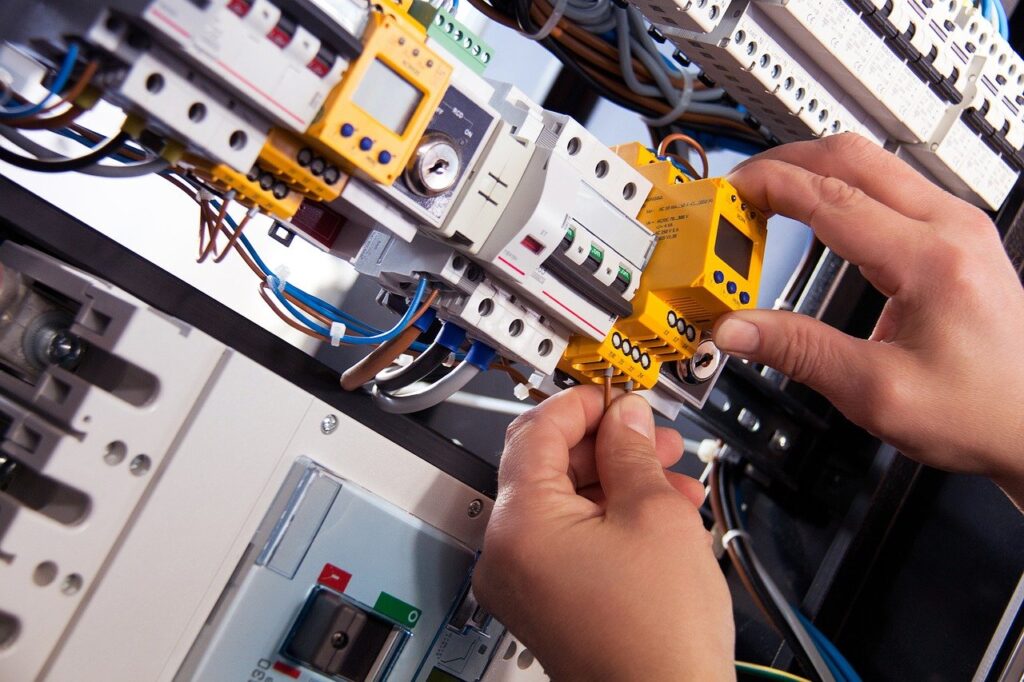Circuit breakers are a crucial component of electrical safety systems. They play a vital role in protecting us from electrical hazards and preventing potential accidents. Understanding how circuit breakers function and the importance of their reliability is essential for maintaining a safe electrical environment.
The Role of Circuit Breakers in Electrical Safety
Defining Circuit Breakers and Their Function
At its core, an electrical breaker is like a safety valve for electrical systems. It is designed to automatically interrupt the flow of electricity when it detects a fault or an abnormal condition in the circuit. This interruption prevents excessive current from flowing, which could lead to overheating, meltdowns, fires, or electrocution.
Moreover, circuit breakers provide protection not only for the circuits but also for connected devices and appliances, ensuring their longevity and safe operation. Learn more tips and tricks for efficient electrical maintenance.
The Connection Between Circuit Breakers and Safety
Electrical safety is of utmost importance in every aspect of our lives. From our homes to industries, circuit breakers are a crucial element in maintaining a secure environment free from potential electrical hazards. By detecting faults and interrupting the flow of electricity, circuit breakers safeguard both property and human lives.
Let’s take a closer look at how circuit breakers work. When a fault occurs in an electrical circuit, such as a short circuit or an overload, the circuit breaker’s internal mechanism is triggered. This mechanism consists of a bi-metal strip or an electromagnet that responds to the excessive current. Once activated, the circuit breaker rapidly opens its contacts, breaking the circuit and stopping the flow of electricity.
But what happens after the circuit breaker trips? After interrupting the flow of electricity, the circuit breaker needs to be manually reset or switched back on. This step is crucial as it allows the fault to be investigated and resolved before restoring power to the circuit. It also serves as a reminder to address any underlying issues that may have caused the fault in the first place.
Furthermore, circuit breakers come in different types and ratings to suit various applications. For example, residential circuit breakers are typically designed to handle lower currents, while industrial circuit breakers are built to withstand higher currents and provide enhanced protection. The selection of the appropriate circuit breaker depends on factors such as the type of circuit, the expected load, and the level of safety required.
In conclusion, circuit breakers play a vital role in electrical safety by detecting faults, interrupting the flow of electricity, and protecting both the circuits and the connected devices. Their ability to prevent potential hazards, such as fires and electrocution, makes them an indispensable component in any electrical system. So, the next time you flip a switch or plug in an appliance, remember the important role that circuit breakers play in keeping you safe.
The Importance of Reliability in Circuit Breakers
When it comes to electrical systems, reliability is paramount. Circuit breaker failure can have severe consequences, ranging from electrical fires to property damage, injuries, and even fatalities. The stakes are high, making it imperative to invest in reliable circuit breakers that are up to the task of interrupting excessive current without fail.
But what exactly does reliability mean in the context of circuit breakers? It goes beyond simply functioning properly when needed. Reliable circuit breakers are designed to withstand the rigors of daily use, ensuring that they can consistently perform their crucial role in protecting electrical systems and individuals.
The Consequences of Circuit Breaker Failure
When a circuit breaker fails, the repercussions can be devastating. Electrical fires can quickly engulf a building, causing extensive property damage and putting lives at risk. The inability to interrupt excessive current can also lead to electrical equipment malfunction, resulting in costly repairs and prolonged downtime.
Furthermore, circuit breaker failure can have a domino effect on an entire electrical system. Overloaded circuits can cause voltage fluctuations, damaging sensitive electronic devices and disrupting critical operations. In industrial settings, where power demands are high, the consequences of a single circuit breaker failure can be catastrophic.
The Benefits of High-Quality Circuit Breakers
Investing in high-quality circuit breakers brings a multitude of benefits. Firstly, these circuit breakers provide enhanced protection, ensuring the safety of both electrical systems and individuals. With advanced technologies and robust construction, they are designed to detect and respond to abnormal current levels promptly. This proactive approach minimizes the risk of electrical fires and other potential hazards.
Secondly, reliable circuit breakers minimize downtime and costly repairs caused by potential electrical faults. By swiftly interrupting excessive current, they prevent damage to electrical equipment and the subsequent need for extensive repairs. This not only saves money but also ensures that operations can continue uninterrupted, avoiding productivity losses.
Lastly, high-quality circuit breakers have longer lifespans, reducing the need for frequent replacements. This not only saves money in the long run but also minimizes the environmental impact of manufacturing and disposing of circuit breakers. By investing in reliable circuit breakers, individuals and organizations can contribute to a more sustainable future.

Selecting Reliable Circuit Breakers
Key Features to Look for in a Circuit Breaker
When selecting a circuit breaker, several key features should be considered. These include the current rating, voltage rating, trip type, interrupting capacity, and the ability to provide protection against various fault types. It is crucial to choose a circuit breaker that is specifically designed for the intended application, ensuring its reliability in preventing electrical hazards.
Understanding Circuit Breaker Ratings
Understanding circuit breaker ratings is essential for selecting the right one. The current rating, usually expressed in Amperes (A), specifies the maximum current the breaker can handle without tripping. The voltage rating indicates the maximum voltage the circuit breaker can safely interrupt. Additionally, the interrupting capacity denotes the maximum fault current the circuit breaker can safely interrupt without damaging itself or the connected electrical system.
Another important factor to consider when selecting a circuit breaker is the trip type. There are different trip types available, such as thermal-magnetic, electronic, and hydraulic-magnetic. Each trip type has its own advantages and is suitable for specific applications. For example, thermal-magnetic circuit breakers are commonly used in residential and commercial buildings, while electronic circuit breakers are often found in industrial settings where precise trip characteristics are required.
Furthermore, the ability of a circuit breaker to provide protection against various fault types is crucial. Faults can occur due to short circuits, overloads, or ground faults. A circuit breaker that offers comprehensive protection against these fault types can help prevent damage to the electrical system and ensure the safety of both people and equipment. Some circuit breakers even have built-in features like arc fault detection, which can detect and mitigate the risks associated with electrical arcs.
It is worth noting that circuit breakers are available in different sizes and form factors to accommodate various installation requirements. They can be mounted on DIN rails, panel boards, or directly on the surface. The choice of the right form factor depends on factors such as available space, ease of installation, and the specific application.
In conclusion, selecting a reliable circuit breaker involves considering key features such as current rating, voltage rating, trip type, interrupting capacity, and protection against various fault types. Understanding circuit breaker ratings and their different trip types is essential for making an informed decision. By choosing the right circuit breaker for the intended application, one can ensure the safety and reliability of the electrical system.
Maintaining and Testing Your Circuit Breakers
Regular Maintenance for Circuit Breakers
To ensure the reliability and longevity of circuit breakers, regular maintenance is crucial. This includes performing visual inspections, cleaning, testing, and lubricating if necessary. It is essential to follow manufacturer guidelines and consult professionals when in doubt to conduct thorough inspections and maintain the functionality of circuit breakers.
During visual inspections, it is important to check for any signs of wear and tear, such as loose connections, corrosion, or damaged components. Cleaning the circuit breakers regularly helps remove dust, dirt, and other contaminants that can hinder their performance. Additionally, testing the circuit breakers ensures that they are functioning properly and can effectively protect electrical systems from overloads or short circuits.
Professional Testing and Inspection Services
While regular maintenance can help identify some potential issues, professional testing and inspection services should be employed periodically. Expert technicians can perform detailed examinations, thermal imaging, and various tests to assess the condition of circuit breakers accurately. These comprehensive inspections help in early detection of faults and ensure the continued safe operation of electrical systems.
During professional inspections, technicians use advanced tools and techniques to evaluate the performance and reliability of circuit breakers. Thermal imaging, for example, allows them to detect any abnormal heat patterns that may indicate potential issues. They also conduct tests such as insulation resistance testing, contact resistance testing, and trip time testing to ensure that the circuit breakers meet the required standards and specifications.
By availing professional testing and inspection services, you can gain valuable insights into the condition of your circuit breakers and take necessary measures to address any identified problems. This proactive approach not only helps prevent unexpected breakdowns but also minimizes the risk of electrical hazards and ensures the uninterrupted operation of your electrical systems.

The Future of Circuit Breakers and Electrical Safety
Technological Advancements in Circuit Breaker Design
The field of circuit breaker design continues to evolve, with advancements in technology leading to more efficient and reliable products. New designs incorporate features such as smart monitoring capabilities, self-diagnostics, and faster response times to ensure enhanced electrical safety.
One exciting technological advancement in circuit breaker design is the integration of artificial intelligence (AI) algorithms. These algorithms can analyze real-time data from the electrical system, allowing the circuit breaker to make intelligent decisions and take proactive measures to prevent electrical faults. For example, if the AI algorithm detects a potential overload, it can automatically adjust the circuit breaker’s settings to prevent a trip, thus avoiding unnecessary downtime and ensuring uninterrupted power supply.
Furthermore, circuit breaker manufacturers are exploring the use of nanotechnology to enhance the performance of their products. By incorporating nanomaterials into the circuit breaker’s components, they can improve its thermal conductivity, mechanical strength, and resistance to electrical arcing. This not only increases the breaker’s lifespan but also enhances its ability to withstand extreme operating conditions, making it suitable for a wide range of applications.
The Role of Circuit Breakers in Sustainable Energy Systems
As sustainable energy systems, such as wind and solar power, become more prevalent, circuit breakers will play a significant role in ensuring their safe and efficient operation. They facilitate the integration of renewable energy sources into the electrical grid, protect against overloads, and provide stability to these systems.
One key challenge in sustainable energy systems is the intermittent nature of renewable energy sources. Circuit breakers equipped with advanced energy management capabilities can help address this challenge. These smart breakers can monitor the energy flow in real-time and intelligently manage the distribution of power, ensuring a balanced load across the system. By dynamically adjusting the circuit breaker settings, they can optimize the utilization of renewable energy and minimize wastage.
Moreover, circuit breakers are also being designed to support bidirectional power flow, enabling energy storage systems to be seamlessly integrated into the grid. This allows excess energy generated from renewable sources to be stored and utilized during periods of high demand or when the renewable sources are not producing sufficient power. By efficiently managing the flow of energy, circuit breakers contribute to the overall stability and reliability of sustainable energy systems.
In conclusion, circuit breakers are the heart of safety in any electrical system. Understanding their function, reliability requirements, and proper maintenance is crucial for creating and maintaining a secure electrical environment. By investing in high-quality circuit breakers and following recommended maintenance practices, we can ensure the safety of both electrical systems and the well-being of individuals. As technology advances, circuit breakers will continue to play a vital role in the future of electrical safety, particularly in sustainable energy systems.



